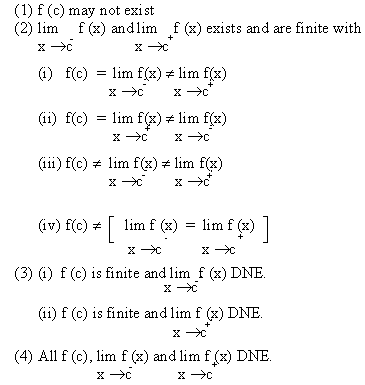|
3.5 Discontinuity And Its Classification
A function f(x) is said to be discontinuous for the point x
= c if at least one of three numbers f(c),  is different from the other two roughly we have the following types
is different from the other two roughly we have the following types
(a) If x = c and if  the point is said to have
the point is said to have
ordinary or finite discontinuity
(b) If  then ’f’ has ordinary discontinuity on the right.
then ’f’ has ordinary discontinuity on the right.
Similarly if f(c) = lim f(x) but lim f(x, then ’f’
has ordinary discontinuity on the left.
(c) If  then ’f’ has removable discontinuity at x = c. then ’f’ has removable discontinuity at x = c.
The function ’f’ is made continuous at
x = c by assigning 
We shall now illustrate the different types of
discontinuities by using examples.
Consider a function f(x) and a point P whose abscissa is
x = c; then following cases may arise.

[next page]
|